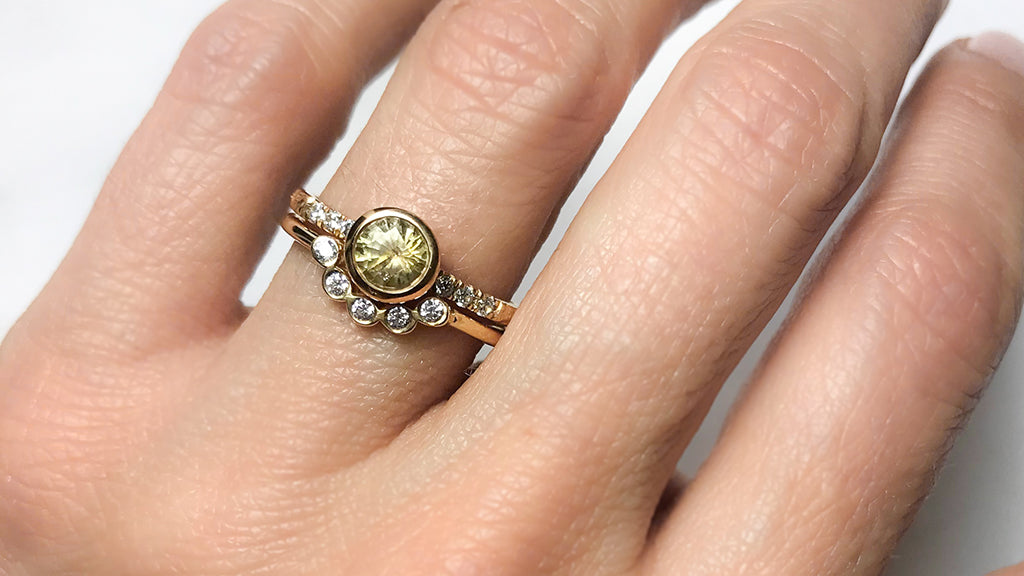Your Cart is Empty
In many Western cultures – from across Europe to the UK, USA and Canada - engagement rings and wedding bands are traditionally worn on the fourth finger of the left hand. But what’s the story behind the rule? Why is this digit the chosen one for jewels so precious? This blog post explores the 'ring finger' tradition throughout history and in the modern-day context.
 His and hers - a pair of matching wedding bands in recycled platinum. Hers, a slender Wishbone. His, a bespoke design with a complimentary contour
His and hers - a pair of matching wedding bands in recycled platinum. Hers, a slender Wishbone. His, a bespoke design with a complimentary contourThe immediate answer to this question is one that’s rather endearing. The tradition of wearing romantic jewellery on the ring finger dates back to Ancient Egypt, when it was believed that a vein called the vena amoris (quite literally ‘vein of love’ in Latin) ran directly from the tip of that finger to the heart.
The breakless circular form of the engagement ring and wedding band is largely thought to symbolise the eternal nature of romantic union, with the open centre a portal to the yet unexplored life ahead as a couple. With these theories in mind, what could be a more meaningful way of communicating lifelong love and commitment than with a band of precious metal on the fourth finger of the left hand? Throw a unique inner-band engraving or a bespoke design into the mix and the sentimental value is off the chart.
 Our Hestia engagement ring, stacked with our Teardrop Diamond Tiara wedding band and Marquise Diadem ring
Our Hestia engagement ring, stacked with our Teardrop Diamond Tiara wedding band and Marquise Diadem ringOf course, in western culture, some of the old-school rules surrounding betrothals, weddings and marriages have since taken a leaf out of the dodo bird’s book. For example, your sentimental rings no longer need strictly mirror your partner’s in metal or design, nor do they necessarily need to be worn on your left ring finger if that doesn't feel right.
We're often asked the question "What finger do Indians wear their wedding rings on?," and the answer is largely the fourth finger of the right hand. That's because, in many Indian cultures, the left hand is deemed unlucky.
Meanwhile, a number of European nations – including Norway, Germany, Denmark, Latvia, Poland and Spain (the motherland of our Creative Director, Arabel!) - have looked to the right hand as the ideal spot for the engagement ring and wedding band because it’s the hand traditionally used for oaths and vows, inherently symbolising honour and trust. Leaning into these beliefs may feel more comfortable for you than the traditions prescribed by British history.
Though many people enjoy wearing their engagement rings and wedding bands together in a stack, there’s no rule that states this is a must. Your engagement ring is an incredibly precious piece of jewellery, and if you don't feel it should share its space then you're free to wear it however and whenever you like! For practical reasons, some opt only to wear their engagement ring on special occasions. Others might wish to secure it a special everyday spot over on the right ring finger once the wedding band comes along. Some might not wear their rings on their fingers at all, but instead hang them with pride on a necklace.
All in all, just like your unique love story, the choice is all yours.
